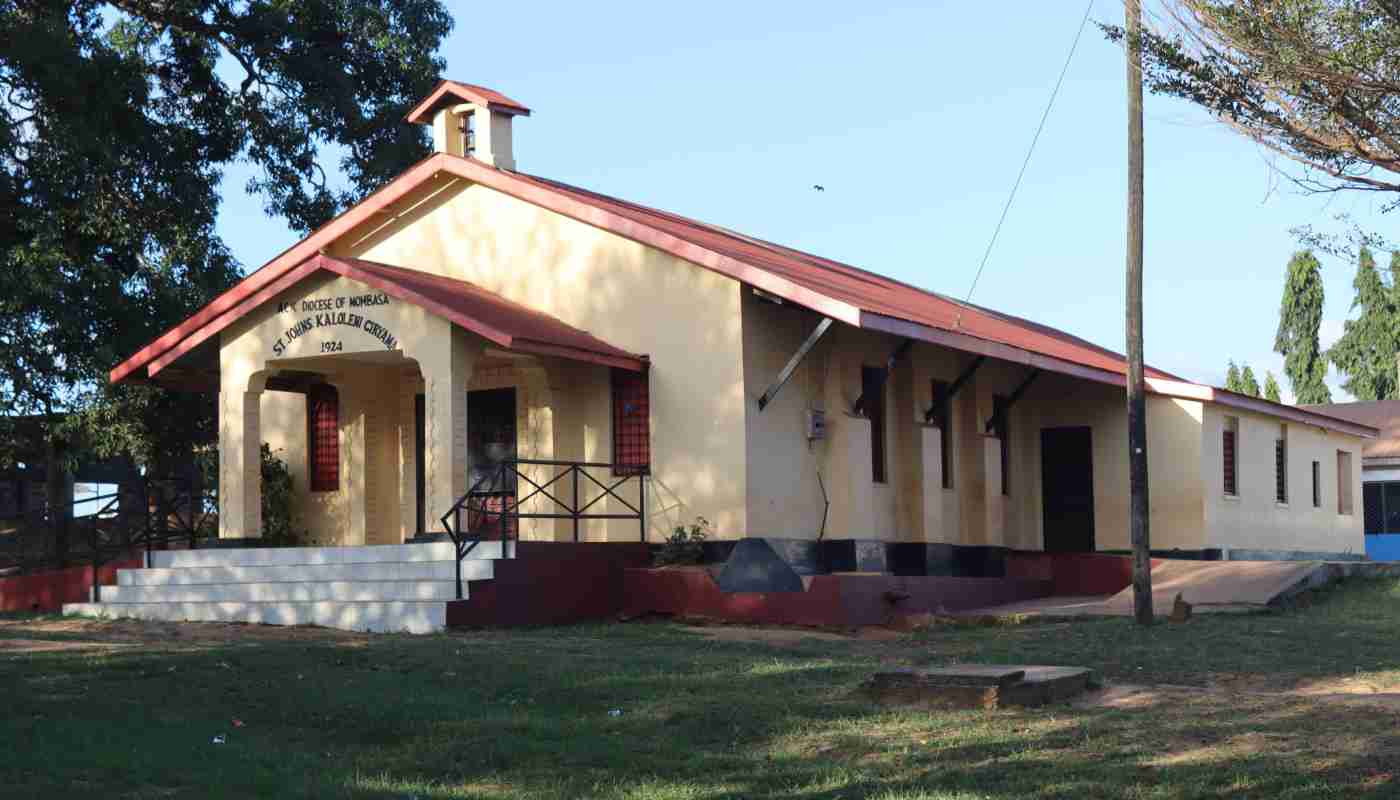
ACK DIOCESE OF MOMBASA

St. John’s Church, Kaloleni, is located at the heart of the Mijikenda community, approximately 50 kilometers north of Mombasa, along the Mazeras-Kaloleni road. The name “Kaloleni” originates from the Giryama verb “kulola,” which means “to observe”.
Kaloleni Church was established by the Church Missionary Society (CMS) under the leadership of nurse Florence Irene Deed. When she arrived on the east coast of Kenya in 1894, she initially lived at the Rabai Mission Station before moving to Chang’ombe, Rabai, where she taught freed slave girls for about 10 years. During this time, she became fluent in the Rabai language and earned the nickname “Memurahai,” meaning “mother of the Rabai people.”
In 1904, Miss Deed moved to Kaloleni to establish a church. She was quickly loved by the local community, who affectionately called her “Bibi Didi” because they found it difficult to pronounce her English name.
The church’s evangelism journey began with the establishment of a temporary church and the printing of Giryama literature, such as Mashomo ga Kwanza ga Kigiryama, Kalenga Juu, and Mashomo ga Hiri ga Kigiryama. Later, they translated the Gospel of Saint Luke into the Giryama language.
As the number of European missionaries increased, some of the notable visitors included Miss Mason, Rev. H.T Harris, Miss Foy, and a teacher trainer, Miss Elinor Bodger, who arrived on October 31, 1927. The Kaloleni Mission Station thrived, leading many people to Christ, and on August 3, 1924, the current church opened its doors, with grass placed over the iron sheets to reduce heat.
The church planting efforts in Mijikenda land were highly successful.
In the Kauma sub-region, churches were established in Vyambani, Jaribuni, Mavueni, and Ng’ombeni.
In the Chonyi sub-region, new churches were planted in Kadzinuni and Musanduni.
In the Weruni sub-region, churches were founded in Kirumbi, Jimba, Mwijo, Chalani, and Mihingoni.
In the Godoma sub-region (West Giryama area), new churches were set up in Tsangalaweni, Dulukiza, Dungicha, Bamba, Kafuloni, Vitengeni, Nzovuni, and Jila.
In the Galana sub-region, churches were planted in Mwangongo, Garashi, Jilore, and Marafa, among many other areas, including Kwale and Taita Taveta.
All these mission centers were coordinated from Kaloleni, the headquarters, as the number of converts increased daily.
On September 21, 1939, at 6:00 PM, during an evening church service, Ngala wa Vidzo was baptized as “Ronald Gideon.” Ronald G. Ngala later became one of the most prominent leaders in our country.